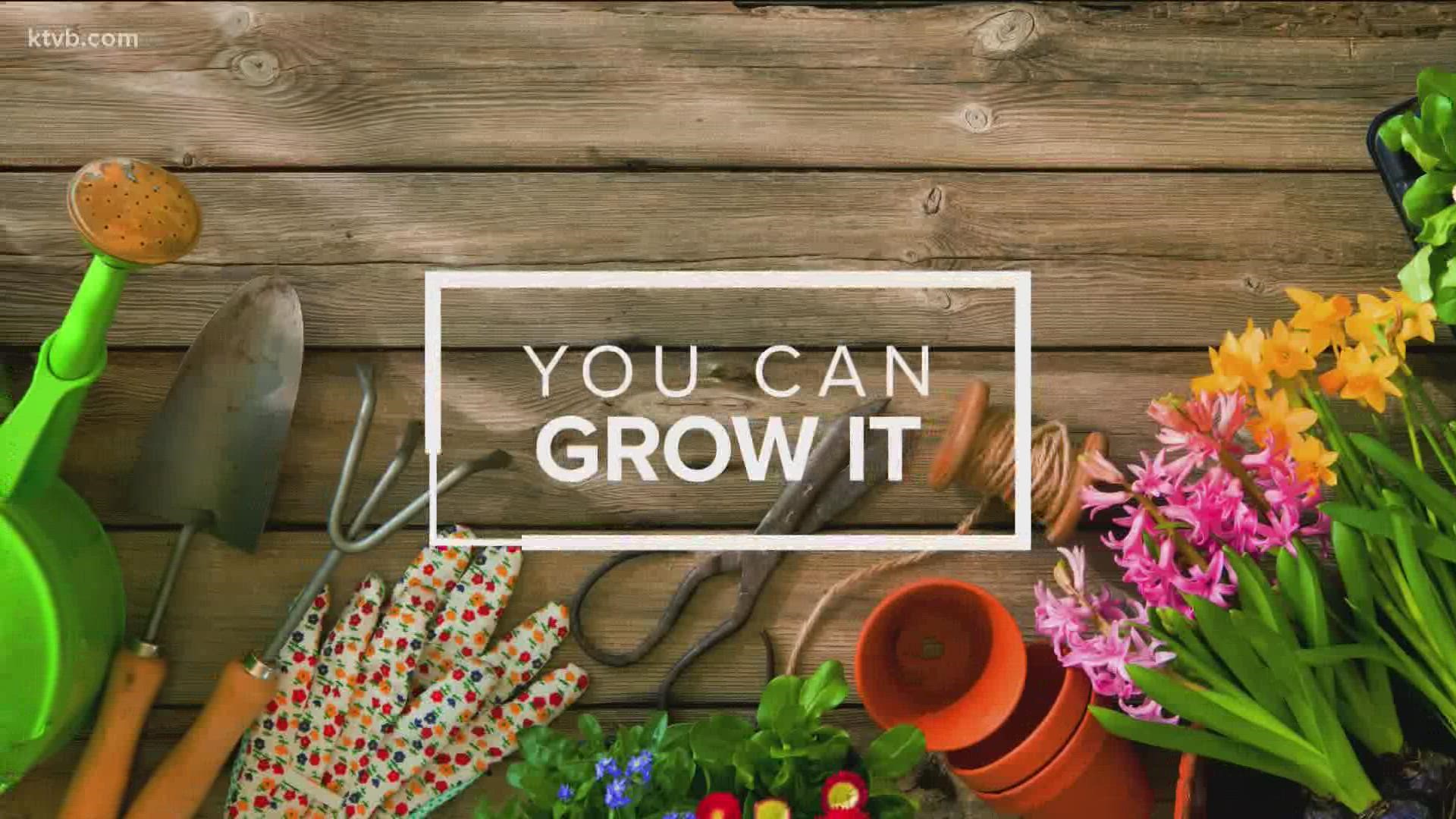BOISE, Idaho — With a warmer and drier climate potentially in our future and while in the midst of a prolonged drought, gardeners should consider ways to serve water. That goes for some of the things we decide to grow in our gardens.
KTVB's Jim Duthie recently shared some ideas for drought-tolerant plants that thrive on less water. On Thursday's 'You Can Grow It,' Duthie focuses on the vegetable garden and shares some drought-tolerant plants producing delicious and healthy food, while conserving water.
All plants need sufficient water to germinate, grow, and produce fruits and vegetables, but there are ways that we can conserve water in our vegetable gardens. Those methods include planting in raised beds, adding mulch to retain soil moisture and using drip-watering systems.
There are many vegetable plants that grow very well with minimal water needs, since they ripen quickly, and use less water through the summer.
The first option is miniature varieties of bell peppers. The peppers need less water for fruit development than other large varieties of peppers. One such variety is the mini-bell blend, an heirloom pepper that matures in 60-80 days.
The 2-inch fruit comes in red, yellow, green and purple colors. They have thick skin, which retains moisture, but they still have all the crispness and sweet flavor of standard-sized bell peppers.
Eggplants are a drought-tolerant vegetable plant that, once established, continues to produce through the heat of summer, even when other vegetables start to slow down.
One variety is called listada, which does very well with less water. The 5- to 6-inch long fruit is beautiful, with white and purple stripes and a very thin skin that doesn't require peeling. The listada is ready for harvest in 75-90 days and has a wonderful flavor.
Okra is an under-appreciated vegetable that is east to grow. It's a staple in southern dishes, but it grows very well in dry conditions everywhere.
One okra variety is called baby bubba and it's only half as tall as other okras. It also grows well in a large container and puts out a bumper crop of hefty, full-sized pods and is ready to pick in just 53 days.
Beans are always a good choice for a low-water use crop. Pole beans, as well as bush beans, get by with minimal watering.
Most beans are ready to harvest in 60-80 days and some bush-type green beans mature as early as 55 days from planting.
Other bean varieties, including lima beans and black-eyed peas, are also well-suited for hot, dry climates.
It doesn't require a lot of water to produce ripe, juicy tomatoes. In fact, one of the secrets to growing great-tasting tomatoes is to cut back on the water as the tomatoes grow and develop.
One of the best varieties for low-water use is the early girl, a very popular hybrid tomato among home gardeners, since it reaches maturity in as little as 50 days.
There are hundreds of tomato varieties, but some are more drought tolerant than others. Those varieties include cherry tomatoes, which give you a constant crop of bite-sized fruits.
Brandywines, a larger and very flavorful tomato with darker skin, is another option.
Finally, squash and cucumbers are fleshy vegetables that are as much as 95% water, but once established, they will need less water, because their roots grow deep and draw up moisture from the deeper soil.
The dark star variety of zucchini has a bush-type plants, so it's easier to find the fruit. You will get lots of 6- to 8-inch squash throughout the summer, ready to pick in just 55 days.
Armenian cucumbers are one of KTVB's favorites. They are long and slender, often growing 2- to 3-feet long. They have a lighter green color and do not require peeling.
Cold-season vegetables planted early in the season, like peas, lettuce, cabbage and broccoli, are not really drought resistant and need more water. However, they typically get sufficient moisture due to spring showers and cooler temperatures.
Watch more You Can Grow It:
See them all in our YouTube playlist here:

